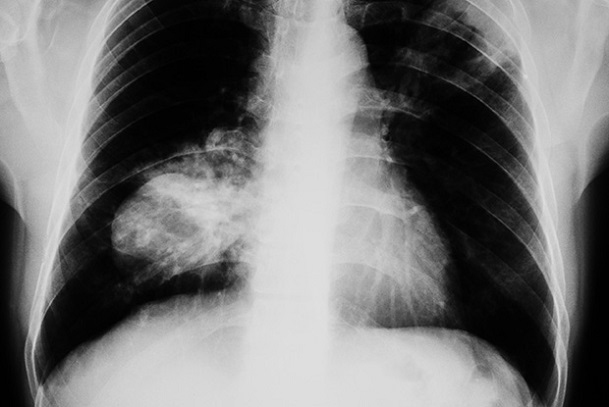 Wash your hands regularly and wear a face mask.
Learn more
Wash your hands regularly and wear a face mask.
Learn more

Lung cancer is the leading form of cancer and leading cause of cancer death in the world today; where there is an approximate number of 1.8 million cases diagnosed every year with 70% in developing countries. It is a type of cancer that begins when abnormal cells start to grow in one of or both lungs in the human body, causing the growth of tumors that reduces one’s inability to breathe. It is a common prevailing form of cancer that happens to both men and women.
The moment the lung cancer starts from the lung itself, it is medically referred to as Primary Lung Cancer. It can spread to other parts of the body like the lymph nodes, brain, adrenal glands, bones and liver. But if diagnosed early, the rate of spreading to other part of the body is minimal.
When cancer from other part of the body like the breasts, liver, pancreatic and colon, spreads to the lung, it is called secondary or metastatic cancer in the lung.
Lung cancer is one of the most avoidable forms of cancer due to one of its risk factors i.e. smoking. Yet that shouldn’t undermine other causes like the radon exposure.
Presently in the world today, the death rate associated with lung cancer has significantly dropped over the years, 51% among men and 26% among women. And this is due to the significant breakthrough in scientific research on lung cancer and its prevention.
As earlier stated, lung cancer is characterized by the uncontrolled growth of abnormal cells in one or both of the lungs, thus the majority of lung cancers begin in the bronchial tubes (i.e. the pinkish gray walls of the lungs airway) or air sacs that conduct air in and out of the lungs. Most cancers of the lung are classified by how they appear under a microscope.
The Lung
The lungs are two sponge-like organs in the chest which is the main organ for breathing, and are part of the respiratory system. As well as the lungs, the respiratory system includes the nose, mouth, trachea (windpipe), and airways (tubes) to each lung. There are large airways known as bronchi (singular: bronchus). Whenever individuals breathe in (inhale), air goes into the nose or mouth, down the trachea and into the bronchi and bronchioles. At the end of the bronchioles, tiny air sacs called alveoli pass oxygen into the blood and collect the waste gas (carbon dioxide). When one breathes out (exhale), carbon dioxide is removed from the body and released back into the atmosphere.
Each lung is made up of sections called lobes – the left lung has two lobes which are due to the room the heart occupies, and the right lung has three.
Lung Cancer in Nigeria
In Nigeria, lung cancer is one of the most diagnosed forms of cancer among men and women, after prostate and breast respectively. Lung cancer alone is responsible for over 100 thousand cases in the country and this might be due to the increase in first and second chain smoking amidst people.
From a study taken by the University Teaching Hospital (UCH), Ibadan in 2018; it was discovered that the ratio prevalence of lung cancer among both sexes is 1.8:1 (male: female) after 1347 cases were discovered with 1262 death cases recorded, with a cumulative risk percentage at 0.78. This might have been caused by cases of tobacco smoking prevalent in rural areas due to lack of proper sensitization.
Types of Lung Cancer
There are two primary types of lung cancer, i.e. non-small cell lung cancer and small cell lung cancer.
This is the most common type of lung cancer that has been known to responsible for 80% - 85% of lung cancer cases. It is common among women, people who are second-chain or non-smokers and youths.
The non-small cell lung cancer can be further classed into three types:
2. Small Cell Lung Cancer
This type of lung cancer is responsible for about 10% - 15% of all lung cancers. It tends to grow and spread faster than the non-small cell lung cancer. About 70% of people with small cell lung cancer will have the cancer to have spread at the time they are diagnosed; this is because it tends to be aggressive and not easily found until spread, especially to the brain.
Due to its nature of spreading easily and quickly, they usually tend to respond fairly well to chemotherapy and radiation therapy but have a poor prognosis i.e. it may return at some point in time.
Conclusion
Along with the main types of lung cancer, other tumors can also occur in the lungs, and they include carcinoid tumor, neuroendocrine tumors, lymphomas, sarcomas, and also benign lung tumors such as hamartomas.
These tumors are quite rare, especially the carcinoid tumor of the lung which only occur among less than 5% of lung tumors.
[Next Article on Lung Cancer: Epidemiology and Prevention]